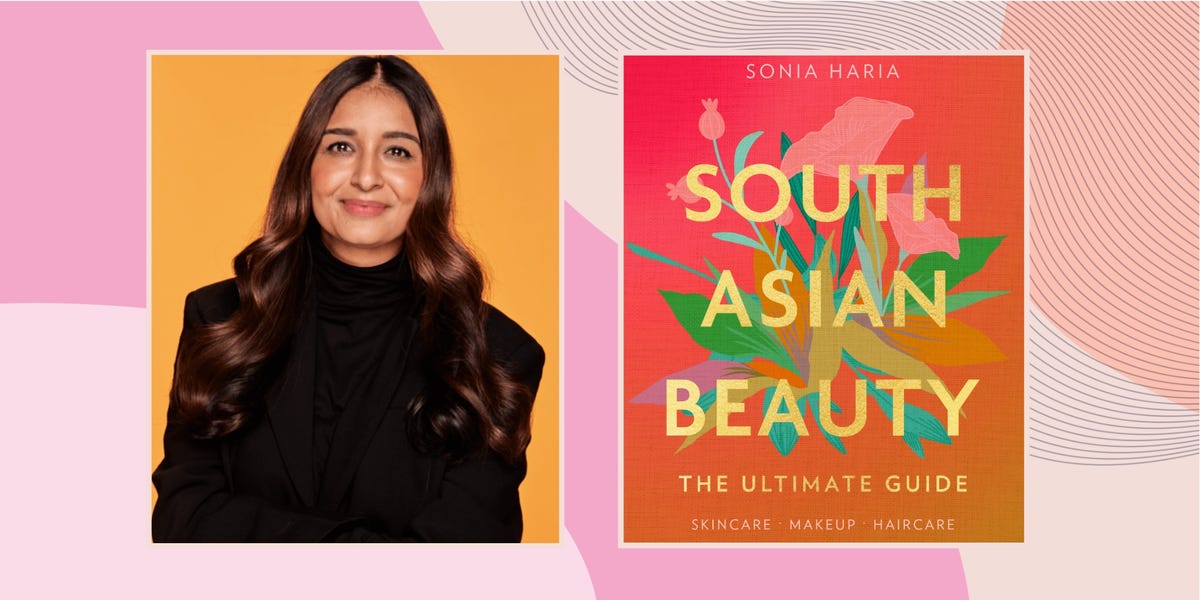
HOW TO APPRECIATE (AND TRY) SOUTH ASIAN BEAUTY CULTURE WITHOUT APPROPRIATING IT
I’m a beauty journalist of over 15 years, and I’m South Asian. Yes, two very separate identities, but the two are linked inextricably.
Being South Asian, and growing up as a second generation Indian in London, my upbringing hugely influenced my love for beauty; so much so I’ve written an entire book dedicated to South Asian Beauty.
To be honest, I wrote the book because there was nothing else out there that spoke to me as a British South Asian woman looking for tailored beauty advice. So I wrote it myself, as a way to highlight our beautiful traditions, culture and expertise and for people – South Asian or not – to learn our treasured beauty secrets.
And that’s exactly what it always felt like: a secret. Our love for wellness through Ayurveda (although we never called it that, it was just part of our lives) that by decades predated the way we see Ayurveda now, through the lens of the Western wellness movement. (I’ve been having ‘turmeric lattes’ since I was a toddler, the inexpensive mix of milk with turmeric a far cry from the hot frothy drink served in coffee chains now for a fiver.)
Everything down to how we shape our brows to the spices we use in chai, to our focus from a young age on scalp care through hair oiling, has become popular in the UK in the past few years. It’s amazing to see. Really! I am so pleased that so many of our incredible cultural beauty and wellness habits are now so widely adopted outside of South Asia and South Asian households in the diaspora.
I am the last person to want to sound preachy, by the way – for the most part we’re all trying to do our best here. But the issue is, I feel, when there’s absolutely no recognition of a certain ‘trend’ having huge cultural value. Many of these beauty traditions have spanned generations and come with real emotional resonance, too.
Before I dive into the ways to appreciate – and try – South Asian beauty, a note on the difference between cultural appreciation and culture appropriation. These terms both shine a light on how our culture can be engaged with in a positive or negative way.
The difference: cultural appropriation is when someone takes one aspect of a culture that is not their own to either mock it, or copy influences from it for profiteering or their own personal gain. On the other hand, cultural appreciation is when someone has a desire to learn more about a culture that isn’t their own, connect with others and broaden their own perspective.
Talk about South Asian beauty at any point of the year
It’s only been in the past five years that we’ve begun seeing South Asian brands featured in magazines or on our TV screens. While this is amazing to see, it will only ever be around key cultural moments of the year such as Diwali or Eid. But many of these brands are brilliant just for being brilliant – without the cultural wrapper around it (and, of course, talking about the culture when warranted).
It would be amazing to see these South Asian founded brands talked about at different times of the year. For example the haircare brand Fable & Mane is excellent as standalone haircare formulas you could integrate with your other luxury French, American or British brands – it’s not just great for Diwali celebrations.
Step away from the filters
One of the biggest downfalls of social media is the hundreds of beautifying filters which all seem to do some version of the same thing: lighten the skin, slim the features and make the eyes appear more sultry. While it might be with the intention to look more alluring, what it really does is play into the Eurocentric beauty ideals that prettify the skin with seemingly cute freckles and a fair skin tone.
The nose slimming is disturbing too, because there are many, many ethnicities, including within South Asia, that have inherently more prominent noses. These filters have created unrealistic expectations for everyone, but particularly those with darker skin and non-traditionally European features.
It’s one thing if adults are using these face-changing filters to make them look more appealing in their eyes, but I find it especially troubling when teenagers and children see that social media is prompting them to look prettier through filters with lighter skin. The damage and impact of colourism – which favours lighter skin tones over darker skin tones – will continue to wreak havoc on younger generations unless we move away from these damaging filters.
The beauty practices in South Asia
Henna for me is one of the beauty traditions that really exemplifies cultural appreciation rather than appropriation. It’s a design that will last on your hands for up to 10 days, so if you’re committed to it for that long, it’s a sign of appreciating the design. It doesn’t offend me in the slightest when I see a non-South Asian wearing henna, because for them to take the time to apply it and have it on show is the ultimate sign of appreciation.
The same goes for hair oiling, which is hugely beneficial for everyone’s scalp – not just for South Asians! It’s excellent for all hair types, too, from fine, straight, thick or coily. Just a few drops of a good hair oil by a South Asian brand (which uses proven ingredients like amla or castor oil) can hugely benefit your scalp health and in turn make your overall hair condition better, too.
More beauty stories this way...
2024-09-17T11:26:03Z dg43tfdfdgfd